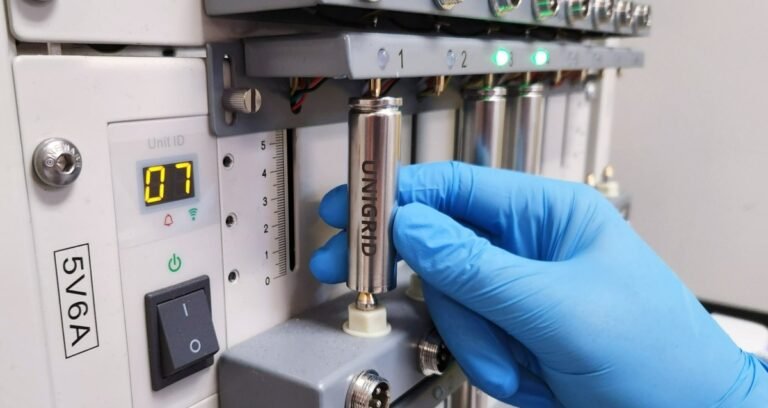If there’s one thing holding batteries back, it’s cost.
The most common type of battery, lithium-ion, still costs about $140 per kilowatt-hour for a pack. While that’s low enough to have spurred electric vehicle adoption, even the cheapest lithium-ion chemistries are still too expensive to put a large battery in every home to protect against power outages.
Instead, manufacturers have begun to explore sodium-ion batteries, not as a replacement, but as a supplement to lithium-ion.
“When produced at the same scale, sodium ion should be about half the production cost of lithium-iron-phosphate because the raw materials are a hundred times cheaper,” said Darren Tan, co-founder and CEO of Unigridhe told TechCrunch.
Despite the promise, sodium ion is not quite ready for widespread use. The batteries made with it are not very dense, which makes them too large and too heavy for EVs. Additionally, many variants behave differently from lithium-ion when charged and discharged, meaning that packs made with sodium-ion need new electronics to manage them.
Tan’s startup believes it has solved these problems by using a new chemistry based on sodium-chromium oxide in one half of the battery and tin in the other (though Tan stresses that the company can substitute other materials from two sides). Unigrid’s batteries take up no more space than a lithium-iron-phosphate cell, sometimes less. In addition, their power output mimics that of lithium-ion so the company can use the same electronics, and they are made with widely available materials. “Chromium is produced at twice the rate of copper every year,” Tan said.
The company was born out of Tan’s research at UC San Diego, where he was a doctoral student under Shirley Meng, a prolific materials scientist focused on energy storage. Their goal was not just to create a cheaper battery, but also a safer one.
Unigrid’s batteries won’t runaway and catch fire until the internal temperature rises to several hundred degrees Celsius, Tan said. “Sodium ion shouldn’t just be like lithium ion, it should be much safer so we can put it in buildings, hospitals, data centers, so we can achieve widespread distributed energy storage,” he said.
To deliver so many batteries, Unigrid is not going to build its own factories. Instead, it will work with smaller battery makers that exist simply to make other companies’ designs. Think of them like TSMC, which makes computer chips for companies like Apple and Nvidia, albeit on a much smaller scale. Unigrid’s chemistry works on its existing equipment, and Tan said there is enough spare capacity in those facilities to produce megawatt-hour-scale batteries.
Unigrid’s first market will be energy storage for buildings and small campuses, but it is also trying to supply manufacturers of so-called light electric vehicles such as scooters, motorcycles and tuk-tuks. Small vehicles like these are popular in India and Southeast Asia, where intense heat can make lithium-ion batteries prone to overheating. “There’s a huge opportunity there where the climate is very hot and there are a lot of battery fires,” Tan said.
To put the sodium-ion batteries into production, Unigrid raised a $12 million Series A round. The round was led by Transition VC and Ritz Venture Capital, with participation from Union Square Ventures and Foothill Ventures.
Tan hopes Unigrid will sell cells sooner. “We really wanted to do something that could have a more immediate and more short-term impact, something that we could get to market in the next five years,” he said.
